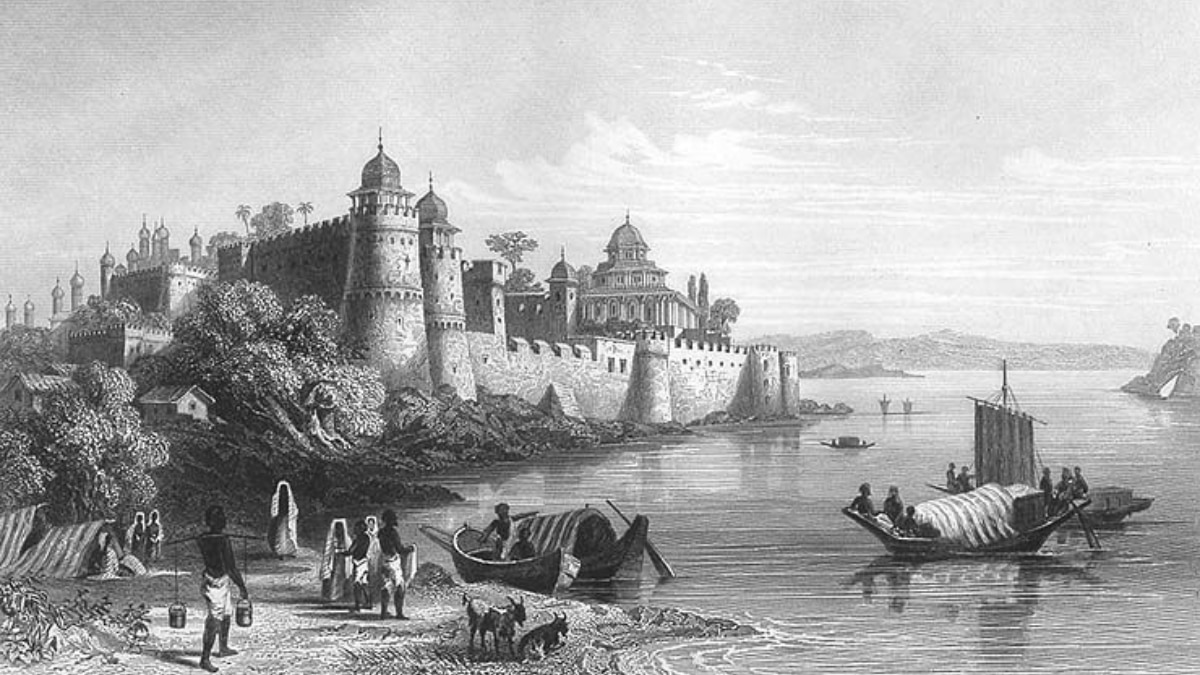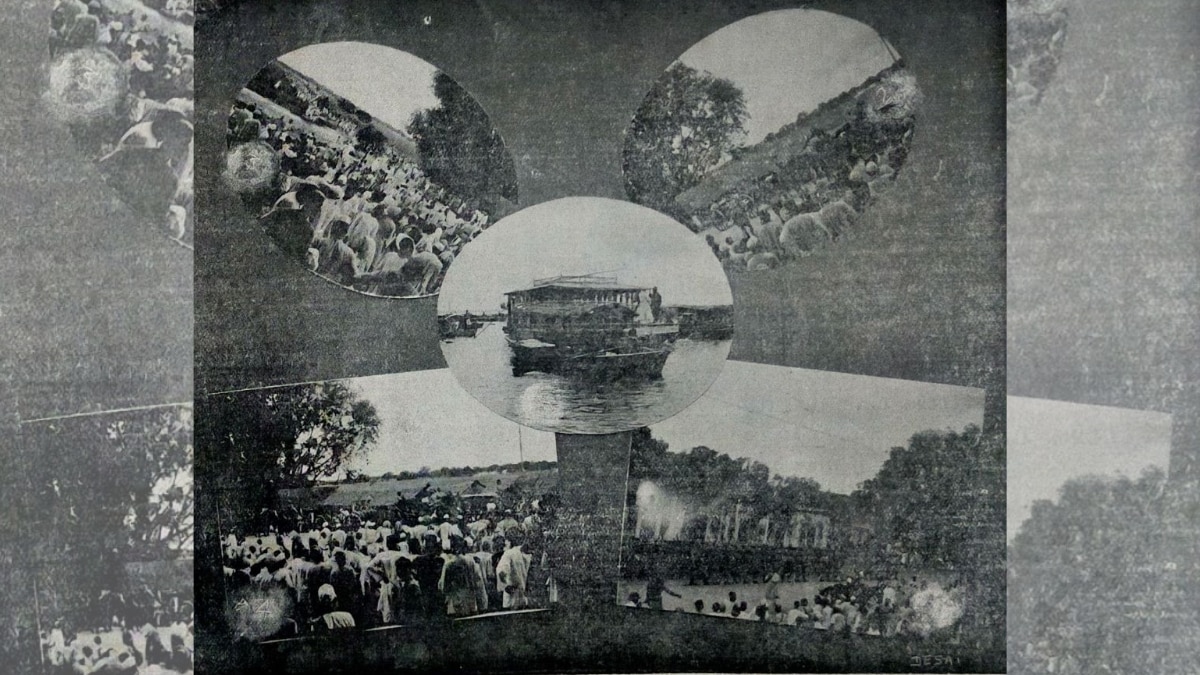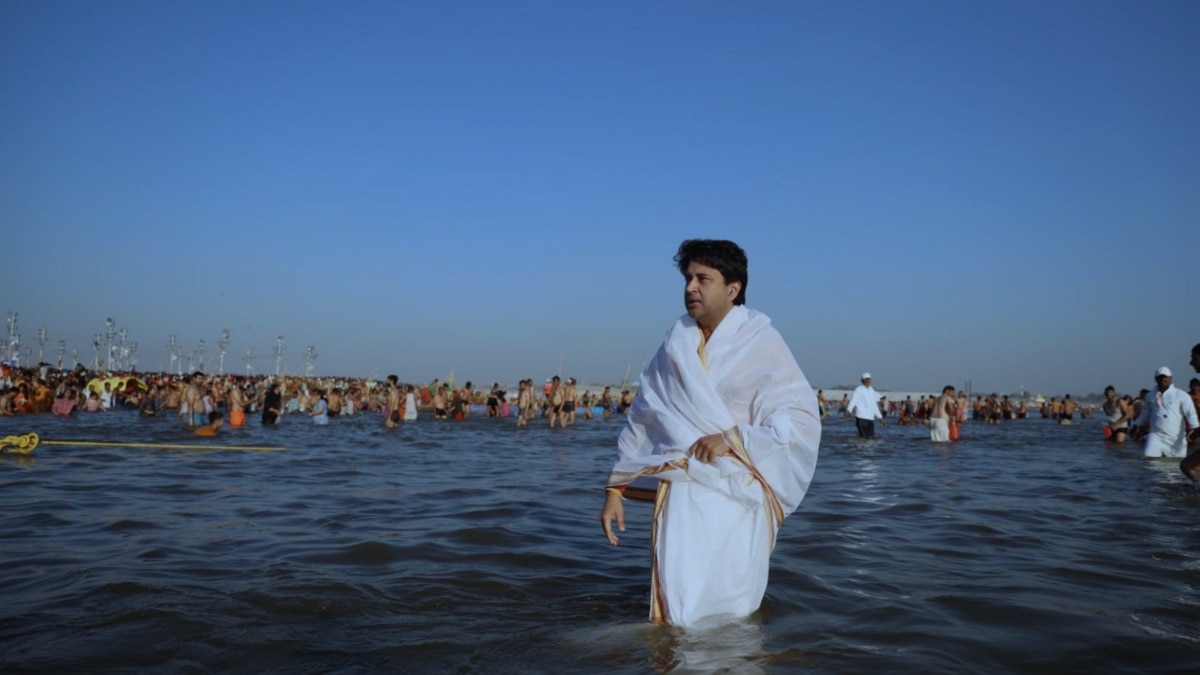[ad_1]
The Maha Kumbh is running in Prayagraj, which was previously known as Allahabad, and crores of people have visited the “king of pilgrimages” and have taken a dip in the Triveni Sangam. Poona Kumbh is celebrated on the basis of the posts relative to the Sun, Moon and Jupiter every 12 years in Haridwar, Prayagraj, Ujjain, and Nashik-Trimbakeshwar.
The history of Kumbh Mela has been for centuries, while some believe it mentions in the Vedas and Puranas. It has long been recognized as one of the largest religious meetings in the world, which attracts millions of devotees. While modern history documentation of the importance of Kumbh on a large scale, fewer people are likely to have deep historical relations with Scindia Marathas.
Scindia Maratha and her prayer connection
Ujjain Scindia was the first capital of the Marathas. For 500 years, Simhastha Kumbh was not held in Ujjain, but when Ranojirao Scindia made the city its capital in 1731, he resumed the festival.
According to Vikram-Smarti-Grath, the Ujjain fair began late in the 18th century when Ranoji Scindia invited Akhar to a religious festival from Nashik to Ujjain. Here, Ranoji was the first to follow the religious assemblies, such as Ashoka and Harsha, such as Ashoka and Harsha. Such protection strengthened his image as a sacred Hindu king and provided religious verification for his reign.
The city of prayer has seen many empires growing and falling, and it has also been the center of devotion for Scindia Marathas. The founder of the Scindia dynasty, Maratha General Ranoji Scindia, Mughal Sabdar of Allahabad, fought against Muhammad Khan Bangah. According to Vinayak Damodar Savarkar, Ranoji’s son, Maratha General Duttji Scindia, was given duty by the Maratha government to march towards Punjab and Multan and to introduce orders and regular governments in the newly won provinces. He was to come to Kashi, Prayagraj, where Raghunath Rao was to meet as the head of the second army. Then the Maratha forces of the Allied Marathas were to march in Bengal and freed the entire province by clarifying the entire province about the Mughal and English, who recently won the 1757 Battle of Plashi.
According to Pakistani writer Majid Sheikh, Scindia was able to establish peace as its governor in Lahore, but attained martyrdom in Burari Ghat in Delhi, before he could pray to the Mughals through a “Firman” . What Duttji could not achieve, his brother Maharaja Mahadji was successful in getting Scindia.
According to Sir George Dunbar, the English East India Company had attained the mentor of the Mughal emperor after the Buxar battle in 1764, but after seven years Shah Alam went to Delhi from Riyagraj and made a prisoner and lost to the Marathas and lost to the Marathas and A prisoner was formed and was made a prisoner and a pensioner by Mahadji Scindia. He provided a ‘firman’ to Mahadji for the provinces of Kora and Allahabad.

According to the British historian Sir Christopher Bailey, between 1760 and 1830, the Marathas put money in Prayagraj, built a large number of religious buildings and fed a whole new generation of priests. Most of the temples present in popular pilgrimage places in the middle of the 19th century were built by the Marathas during the 150 years.
In the year 1786, about 1.7 lakh Maratha pilgrims chose to increase their merit by traveling in a grand armed convoy. For the above pilgrimage, pilgrims from the area of Maharaja Mahadji Scindia were provided “pilgrim passports”.
The historical inscription suggests a connection between the Shaktipeeth Alopi Devi Temple in the Priharaj and Scindia Maratha dynasty. Maharaja Mahadji Scindia is believed to have developed the Triveni Sangam region, where the temple is located in the end of the 18th century while living in Prayagraj.
The latter renewal and development were performed in the 1800s by Queen Bizbai Scindia, further enhancing the promotion of the temple. On January 16, 1836, Maharani Baija Bai Bai Scindia, who fought against former British Prime Minister Arthur Walesley, rushed to Allahabad in the Battle of Ashe and surrounded the banks of Jumna beyond the city.
Also read on ABP Live. Makar Sankranti 1761 and Third Battle Panipat: A bloody turn point in the history of India
Baiza Bai and Scindia Maratha Heritage in Phayagraj
In prayer, Bai-K-Bag localism is named after Baisa Bai Scindia, and here she built the Venny Madhav Temple. He also built his palace in Gwalior Kothi, Prayagraj.
On 9 February 1836, Scindia hosted a dinner in his tent for 20 citizens and the army. In the evening, there was a dance, and fireworks were displayed. Allahabad has a very broad enclosure, called Khusru’s garden. According to Fanny Parks’s travelogue, the tent was sent there, and some of the magnificent tamarind trees were picked under the Baija Bai Scindia, where a Maratha dinner was held. In the evening, two of his pet rhinoceros came. They fought fiercely instead of each other, and it was an entertainment for guests.
Parks wrote: “There were some tents in the East-East which were at that holiest place, the junction of Triveni, Three River; And for these tents he came down to bathe continuously; A great consent of her women and people was in attendance on her, and there she performed rituals and ceremonies … I found that the women of Mahatta gathered there: tents were close to the Ganges margin, and the walls of the canvas were out Gone at a lot of distance in the river. Her Majesty, in her normal dress, woke up in the stream, and the men’s gaze reached the holy junction, where she performed her devotion, the water reached her waist. After which she again returned to the tent, changed her dress, demonstrated worship, and the attendants gave great gifts to the Brahmins. ,
Maharaja Madho Rao Scindia was the great grandson of Maharani Bahja Bai Scindia. He died in 1925 in Paris, and was cremated. However, his ash was brought back to India, and the last rites were performed in Shiragraj. An impressive scene was seen in the city, when the morning of July 13, 1925, the Maharaja’s ash was taken in a serious procession from Bai-K-bug, named in the Ganges named after Maharani Baija Bai Scindia. The residents of the prayer set out in thousands to pay their tributes to the remains of one of the Indian princes.

A large number of people, men and women,
Among the people participating in this procession, prominent Indian freedom fighter and Pandit Madan Mohan Malavia, Pandit Jawaharlal Nehru, Pandit Hirda Nath Kunjru, Dr. Kailash Nath Katju, Dr. M. Prominent Indian freedom fighters and politicians like Waliullah and Mrs. Sarojini Nidu were included. The flags were half mast, and the government offices and the High Court were closed till 1 pm.
The ash was taken to the confluence in a boat, where, after the required ceremony, he was sent to the Ganges under the 21-Block salute, while at the same time he removed the same minute gun from Agra Fort at the same time. She went.
Last year, the ashes of the late Rajmata, Madhavi Raje Scindia of Gwalior were sent to the Ganges in prayer like her grandfather. Recently, the above Scindias, Union Minister Jyotiraditya M. The descendants of Skindia participated in the Kumbh Mela with their family, took a dip at the Triveni Sangam, and in the presence of Uttar Pradesh Urban, a monument was stamped on the Maha Kumbh 2025. Development Minister Nand Gopal Gupta “Nandi”, and Mayor of Prayer Ganesh Kesarwani.

Author Arunanash B. Goswami is the head of Scindia Research Center, Gwalior.
[Disclaimer: The opinions, beliefs, and views expressed by the various authors and forum participants on this website are personal and do not reflect the opinions, beliefs, and views of ABP Network Pvt. Ltd.]
[ad_2]
Source link

